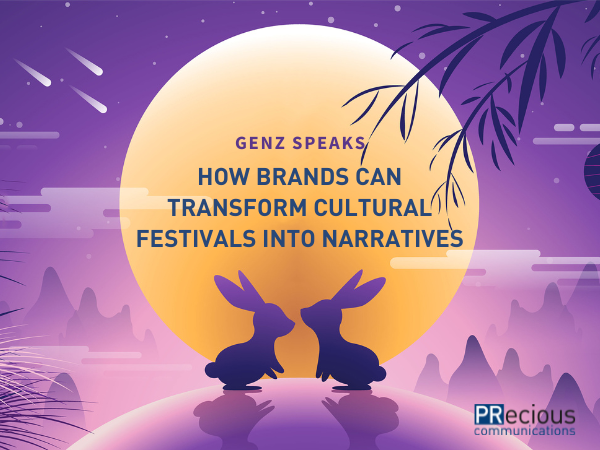Breaking Down the Communications Great Wall to Realise Success in Southeast Asia

Intern Diaries: How Has Your Perception of PR Evolved Since Your PRecious Internship?
May 6, 2021
Views From the Top: Sustainability Trends Across Industries and Their Impact
May 6, 2021
Amidst mounting tensions from the East-West trade war and China’s constricting local regulatory landscape, Chinese companies and brands are setting their sights and expanding beyond the Great Wall. They are, in fact, heading Southeast, with Chinese tech giants increasingly setting up shop in Singapore as the city-state continues to gain popularity as the world’s gateway to Southeast Asia. Recently, Alibaba and ByteDance (the mastermind behind TikTok) have signed office leasing deals to support their respective Singapore expansions. Late last year, Chinese gaming and social media behemoth Tencent opened a new Singapore office that will serve as a regional hub for Southeast Asia.
While the Belt and Road initiative and favourable geopolitical and economic climate in Southeast Asian markets have contributed towards placing Southeast Asia more prominently on China’s radar in recent years, China’s long-standing interest in the region dates back to early centuries, with the proliferation of the Austronesian spice trade, the emergence of the Maritime Silk Road and the establishment of Chinese trading colonies in Southeast Asia. Chinese vessels frequently traversed the maritime silk route and docked at Southeast Asian ports, where Southeast Asian merchants exchanged spices for Chinese porcelain and silk.
Over the centuries, China’s relationship with Southeast Asia has evolved, along with new issues, policies and technological advancements impacting the geopolitical milieu. Last year, for instance, the Regional Comprehensive Economic Partnership (RCEP) finally came into fruition, with the deal seen to strengthen economic ties between the ASEAN countries and China.
As China works towards cementing its position as a global superpower, China companies will continue to seize opportunities in Southeast Asia – the world’s next growth frontier with a GDP of over $3.1 trillion. But what does it truly take for China companies to penetrate a fragmented market such as Southeast Asia, and how can these companies tailor their strategies to ensure sustainable growth and expansion in Southeast Asian markets?
The great wall of brand perception biases
Field research has shown that being labelled as a “Chinese company” could have negative connotations in global markets among consumers, particularly for consumer goods. This can impact Chinese brands as they expand abroad, though it is encouraging to see a number of brands are undeterred and exhibit a trademark resilience. As Chinese companies work on strengthening their international footprint, one of the first things they need to prioritise is strengthening their reputation as an international brand, and developing campaigns that address consumer biases. It is only through enhancing their brand image that they can win customers, hook investors, attract talent and build a partner network that can open doors to more possibilities in Southeast Asia (and possibly even beyond).
Setting up shop in the Little Red Dot is a great tactic to reposition Chinese brands along a new digital silk road. The first-world city-state not only comes second globally in terms of both competitiveness and the ease of doing business, but is also known for its diplomatic relations (Singapore was the best bet for the Trump-Kim summit, after all). But without a proper communications strategy, the expansion could fail to get the right amount of hoo-hah it deserves, with Chinese companies failing to optimise the ROI from the expansion.
Attacking a fragmented market
As Chinese companies work on attacking Southeast Asia more effectively, it is crucial to employ local strategies that play around each market’s strengths and local nuances. One cannot simply rely on a one-size-fits-all approach, especially in a fragmented market like Southeast Asia which has diverse cultures, practices and business landscapes. Landing good local media coverage that puts Chinese brands in the spotlight entails having specialised local knowledge and insights on what top tier local media are looking for in each market, and how to best package the messages in the form and manner that will best position the brand to win the favour of various stakeholders: investors, consumers, merchants, government agencies, enterprise partners, among others.
Chinese brands may be used to leveraging WeChat to communicate with potential clients and Baidu to build their reputation and expand their client base in China, but betting on these channels in Southeast Asian markets won’t get them as far. Consumers and company decision makers share and consume content differently – with Facebook, Instagram, Telegram and LinkedIn being the more prominent social networking platforms in the region, including for sharing insights and amplifying media articles.
The value of having a communications partner who understands the local industry and consumer behaviour cannot be overemphasised as Chinese companies try to find their firm footing in Southeast Asia’s fragmented market. An effective communications partner works as a consultant who guides Chinese companies across every phase of their expansion journey. A reliable communications partner advises on strategic media lists, story angles that work well with different local media across the region, helps develop (or localise) the branding strategy and messaging, and shares insights on which communications medium works best for a particular objective. This way, Chinese companies can have a more realistic view of what can be done, given budget constraints, to reach local markets faster in Southeast Asia and achieve their multi-pronged objectives.
Want more than a mere run-of-the-mill market strategy to reach your audience beyond the Great Wall? Our PRecious team is composed of dedicated consultants who have a solid understanding of Southeast Asian markets and their local nuances. Reach out to our team to find out how we can help you go to market and elevate your brand image across Southeast Asia.








